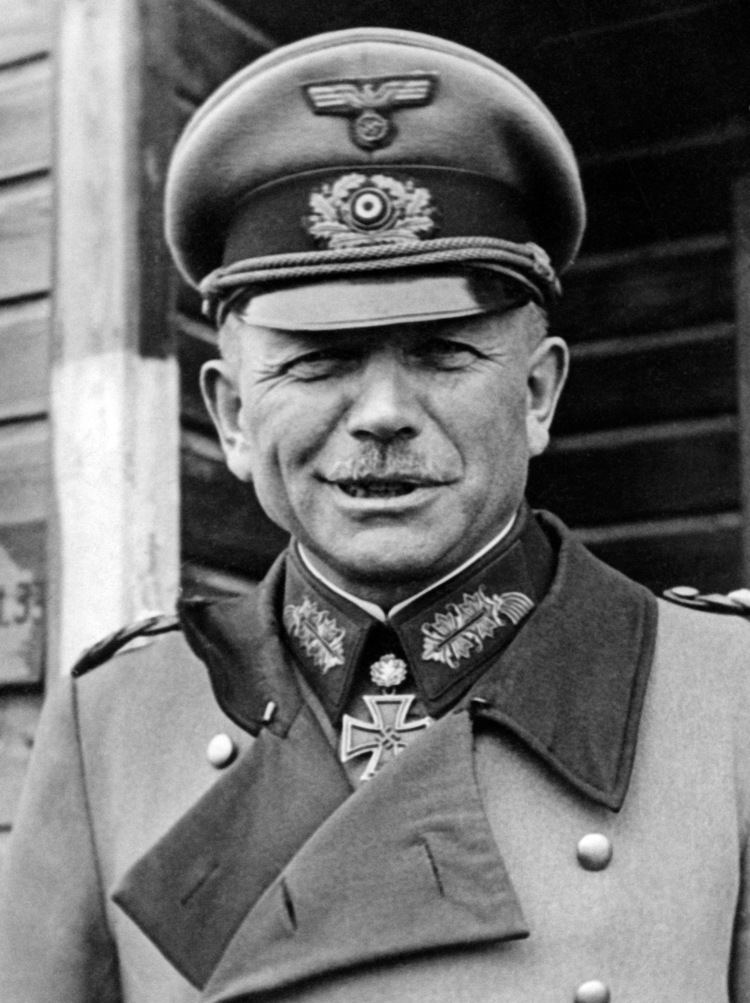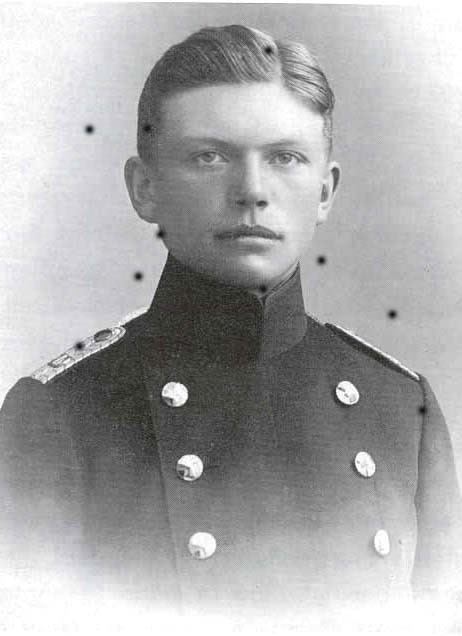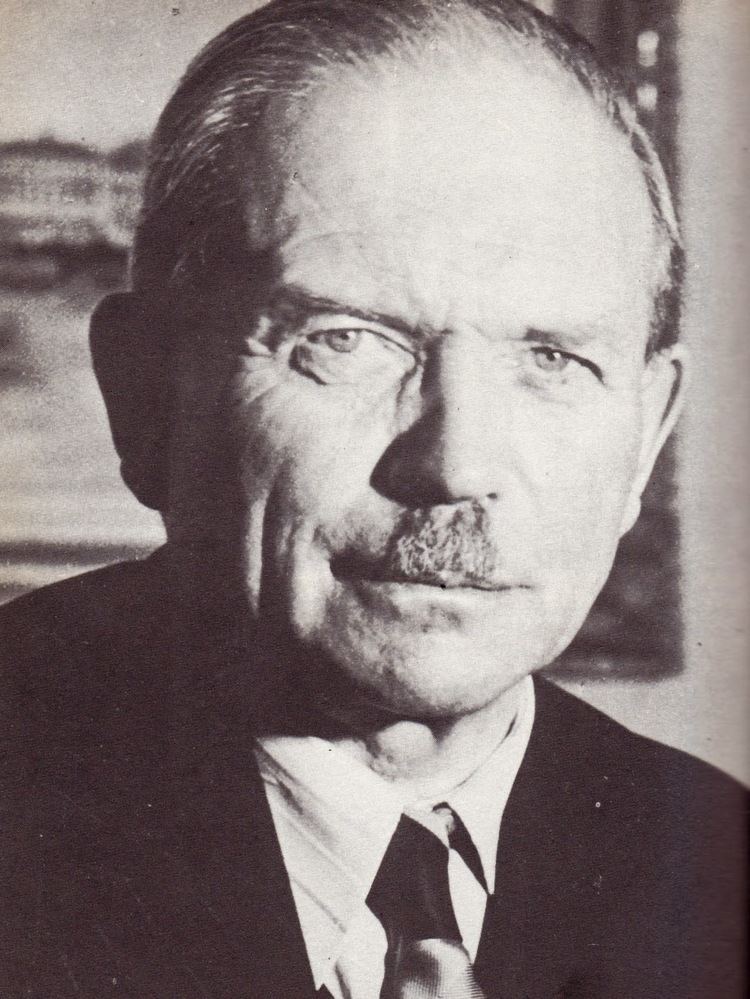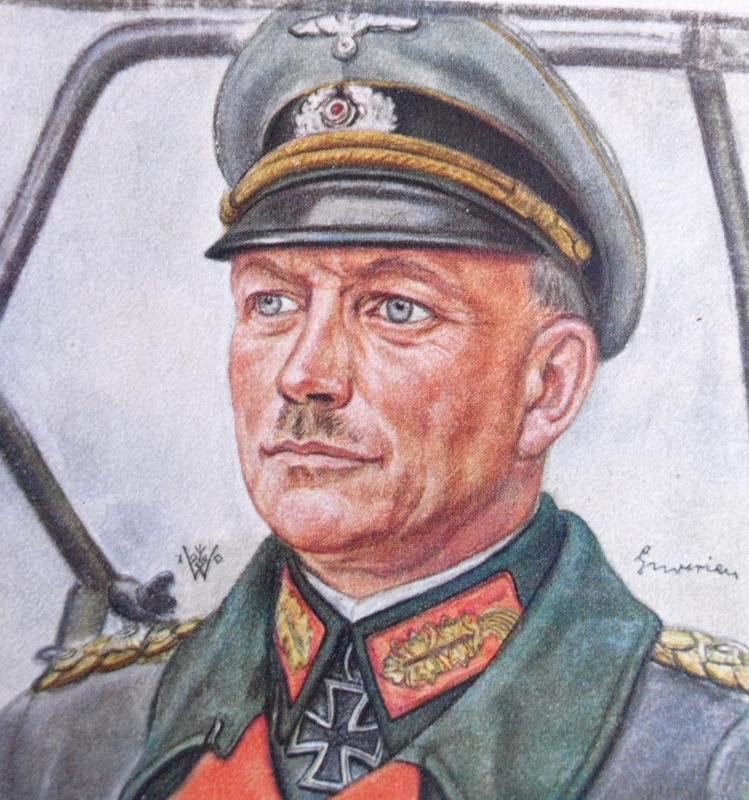Years of service 1907–45 Children Heinz Gunther Guderian Relations Heinz Gunther Guderian | Name Heinz Guderian Rank Generaloberst | |
 | ||
Nickname(s) Schneller Heinz (Fast Heinz)Hammering Heinz Born 17 June 1888Kulm, West Prussia, German Empire now Chelmno, Kuyavian-Pomeranian Voivodeship, Poland ( 1888-06-17 ) Commands held 2. Panzer DivisionXVI. ArmeekorpsXIX. ArmeekorpsPanzergruppe Guderian/Panzergruppe 2/2. Panzerarmee Battles/wars World War IWorld War IICase White (Invasion of Poland)Case Yellow (Invasion of France)Case Barbarossa (Invasion of Soviet Union)Battle of KievBattle of Moscow Books Panzer Leader, Achtung – Panzer! Parents Friedrich Guderian, Clara Guderian Similar People Erich von Manstein, Erwin Rommel, Gerd von Rundstedt, Fedor von Bock, Georgy Zhukov | ||
Heinz Guderian
Heinz Wilhelm Guderian ( [ɡuˈdeʀi̯an]; 17 June 1888 – 14 May 1954) was a German general (colonel-general from 1940) during World War II, noted for his success as a leader of Panzer units in Poland and France and for partial success in the Soviet Union.
Contents
- Heinz Guderian
- 8 12 battlefield i the battle of france episode 1 gdh
- Early life
- World War I
- Interwar period
- Mobile warfare
- Poland
- France
- Soviet Union
- Inspector General of Armoured Troops
- Chief of Staff of the Army
- Later life and death
- Disputes with Hitler
- Appropriation of estate
- Awards
- Works
- References

Guderian had pioneered motorized tactics in the pre-war army, while keeping himself well informed about tank development in other armies. In particular, he promoted the use of radio communication between tank-crews, and devised shock-tactics that proved highly effective. In 1940, he led the Panzers that broke the French defences at Sedan, France, leading to the surrender of France. In 1941, his attack on Moscow was delayed by orders from Hitler with whom he disagreed sharply. Soon, the Germans found themselves suffering from severely cold weather. This perhaps led to the German defeat at Moscow. After the German defeat at the Battle of Moscow he was transferred to the reserve. This marked the end of his ascendancy.

After the defeat at Stalingrad, Hitler appointed him to a new post, rebuilding the shattered Panzer forces, but he feuded with many other generals, who managed to get his responsibilities re-allocated. He was then appointed Chief of the General Staff of the Army, but this was largely a symbolic post, since Hitler had effectively become his own Chief of Staff. As Chief of Staff, he authorized the use of the new Tiger Manual (TigerFibel) to train panzer troops. From 1945-48, Guderian was held in U.S. custody, but released without charge. He later served as an advisor helping in the establishment of military forces in West Germany.

8 12 battlefield i the battle of france episode 1 gdh
Early life

Guderian was born in Kulm, West Prussia (now Poland), the son of Clara (Kirchoff) and Friedrich Guderian. He entered the Army in 1907. On 1 October 1913, he married Margarete Goerne, with whom he had two sons, Heinz Günther (2 August 1914 – 2004) and Kurt (17 September 1918 – 1984).
World War I
At the outset of World War I Guderian served as a Signals Officer in the 5th Cavalry Division. On 28 February 1918 Guderian was appointed to the General Staff Corps. Like many Germans, he disagreed with Germany signing the armistice in 1918, believing the German Empire should have continued the fight.
Interwar period
Early in 1919, Guderian was selected as one of the four thousand officers to continue on in military service for the reduced size German army, the Reichswehr. He was assigned to serve on the staff of the central command of the Eastern Frontier Guard Service. This Guard Service was intended to control and coordinate the independent Freikorps units in the defense of Germany's eastern frontiers against Polish and Soviet forces engaged in the Russian Civil War. In June 1919, Guderian joined the Iron Brigade (later known as the Iron Division) as its second General Staff officer. The commanders of the regular German army had intended that this move would allow the army to reassert its control over the Iron Division; however, their hopes were disappointed. Rather than restrain the Freikorps, Guderian's anti-communism caused him to empathize with the Iron Division's efforts to defend Prussia against the Soviet threat. The Iron Division waged a ruthless campaign in Lithuania and pushed into Latvia; however, traditional German anti-Slavic attitudes prevented the division's full cooperation with the White Russian and Baltic forces opposing the Bolsheviks.
Guderian was assigned as a company commander for the 10th Jäger-Battalion. Later he joined the Truppenamt ("Troop Office"), which was a clandestine form of the Army's General Staff which had been officially forbidden by the Treaty of Versailles. In 1927 Guderian was promoted to major and transferred to the command of Army transport and motorized tactics in Berlin. This placed Guderian at the center of German development of armoured forces. Guderian, who was fluent in both English and French, studied the works of British maneuver warfare theorists J. F. C. Fuller, Giffard Martel and B.H. Liddell Hart. In 1931, he was promoted to Oberstleutnant (Lieutenant-Colonel) and became chief of staff to the Inspectorate of Motorized Troops under Oswald Lutz. In 1933 he was promoted to Oberst or Colonel.
Guderian wrote many papers on mechanized warfare during this period. These papers were based on extensive study of the lessons of the First World War, research on foreign literature on the use of armour, and wargaming done with dummy tanks and later with early armoured vehicles. Some of these trial maneuveres were conducted in the Soviet Union. Britain at this time was experimenting with tanks under General Hobart, and Guderian kept abreast of Hobart's writings using, at his own expense, someone to translate all the articles being published in Britain.
In October 1935 he was made commander of the newly created 2nd Panzer Division (one of three). On 1 August 1936 he was promoted to Generalmajor, and on 4 February 1938 he was promoted to Generalleutnant and given command of the XVI Army Corps.
In 1936 General Lutz asked Guderian to write a book on the developing panzer arm and the theories that had been developed on its use in war. The resulting volume, Achtung - Panzer!, was his most important work. It reviewed the state of armoured development in the European nations and Soviet Russia, and presented Guderian's theories on the effective use of armoured formations and combined-arms warfare ideas of other general staff officers. The book included the importance of airpower in support of the panzer units for future ground combat.
Germany's panzer forces were created largely along the lines laid down by Guderian in Achtung - Panzer!
Mobile warfare
Toward the end of World War I, the German army developed infiltration tactics — breaking through a defensive trench line with special combat teams of sturmtruppen, who advanced in dispersed order rather than massed rushes, and bypassed strong points to attack rear areas to collapse enemy positions. This method was used in the 1918 German Spring Offensive, but the German forces lacked the mobility to exploit breakthroughs and achieve deep penetrations of the enemy defenses. They were unable to sustain the impetus of the initial attack, and ultimately they failed to gain decisive results.
Motorized troops were the key to sustaining a breakthrough, and until the 1920s the extent of motorization necessary was not possible. Soviet marshal Mikhail Tukhachevsky pursued the idea, but he was executed in 1937 in Stalin's "Great Purge" of Soviet military leaders.
Guderian was the leading advocate in Germany of motorization and tanks, and of using armored forces in deep penetration operations. He is regarded as the chief architect of Germany's panzer divisions.
Guderian developed and advocated the strategy of concentrating panzer ("armored") formations at the point of attack (the Schwerpunkt) and deep penetration. In Achtung Panzer, he described what he believed were essential elements for a successful panzer attack: surprise, deployment in mass, and suitable terrain. He proposed armored divisions in which motorized infantry and artillery would operate in conjunction with tanks to achieve a decisive success. In his memoir Panzer Leader, he wrote that as early as 1929, he "became convinced that [...] it would be wrong to include tanks in infantry divisions: what were needed were armored divisions which would include all the supporting arms needed to fight with full effect."
After Hitler came to power and Germany began re-arming, Guderian was empowered to put his ideas into practice.
Guderian believed that among those things needed for success was for commanders of mobile forces to be able to communicate with each other and their sub-units. Guderian insisted in 1933 that German tanks be equipped with radios and intercoms to enable each tank commander to communicate with his crew and with other tanks in his platoon and company. In each individual German tank, the tank crew worked as a team, and the tank commander could communicate with each crew member. Moreover, German tanks worked collectively as teams, providing mutual protection and increased effective firepower. Said Hermann Balck: "The decisive breakthrough into modern military thinking came with Guderian, and it came not only in armor, but in communication." Of Guderian's contributions, Balck considered some of the most important to be the five man tank crew, with a dedicated radio operator in the hull of the tank, and the organization of divisional signals troops to allow the commander to direct the division from any unit. This allowed forward control of the division, which was critical to mobile warfare. The German victories from 1939 through 1941 were not due to superior equipment, but to superior tactics in the use of that equipment, and superior command and control which allowed the German panzer forces to operate at a much faster pace.
Poland
Guderian led the XIX Corps during the invasion of Poland. This corps comprised a panzer division and two motorized infantry divisions. Guderian led his corps in the Battle of Wizna and the Battle of Kobryn. In each of these he abandoned his theories of rapid maneuver and proved highly successful, using tanks to deliver offensive sapper company that successfully blew up majority of the Polish bunkers at Wizna, and showing great political astuteness in the battle of Kobryn by passing the initiative to the Soviets.
Following the completion of the campaign in Poland the armoured forces were transferred to the west to prepare for the next set of operations. The four light divisions had proved to have inadequate firepower, and they were brought up to strength to full panzer divisions, one of which was given to Erwin Rommel. With this change the total number of panzer divisions in the Heer stood at ten. Guderian continued to work in development of the panzer arm. Said Hans von Luck of the 7th Panzer Division in his memoir: "In the middle of February we were transferred to Dernau on the Ahr, hence practically in to the western front. Rommel visited every unit. He told us that he was proud to be permitted to lead a panzer division. Guderian too came to inspect and talk to us. 'You are the cavalry' he told us. 'Your job is to break through and keep going.'"
France
In the planning for the Invasion of France, Guderian supported the change in the attack plan from a massive headlong invasion through the Low Countries to the Manstein Plan shifting the weight of the armoured formations to the Ardennes. Guderian's corps spearheaded the drive and were through the Ardennes and over the Meuse in three days. He led the attack that broke the French lines at Sedan, resulting in a general collapse of the French defenses. His guidance of the panzer formations earned him the nickname "Der schnelle Heinz" (Fast Heinz). Guderian's panzer group led the "race to the sea" that split the Allied armies in two, depriving the French armies and the BEF in Northern France and Belgium of their fuel, food, spare parts and ammunition. Faced with orders from nervous superiors to halt on one occasion, he managed to continue his advance by stating he was performing a 'reconnaissance in force'. Guderian's column was famously denied the chance to destroy the Allied forces trapped in the pocket at Dunkirk by an order coming from high command.
Soviet Union
In 1941 Guderian commanded Panzergruppe 2, also known as Panzergruppe Guderian, during Operation Barbarossa, the German invasion of the Soviet Union. The unit later was redesignated Second Panzer Army. He became the 24th recipient of the Oak Leaves to his previously-awarded Knight's Cross of the Iron Cross on 17 July of that year after his armoured spearhead captured Smolensk. Poised to launch Operation Wotan, the final assault on Moscow, he was ordered to turn his army south in an effort to encircle the Soviet forces to the south. He protested against the order.
Following the completion of the encirclement and the Battle of Kiev, Guderian was ordered to make a drive for Moscow in mid-September 1941. With winter fast approaching, the effort seemed fraught with the risk of over-extending and leaving his command subject to counter-attack. He was ordered to proceed anyway. The offensive weakened, and although several units under Guderian's command made it to the outskirts of Moscow, the city remained in Soviet control. The Soviets then launched a counterattack that sent the German forces reeling and threatened a general collapse. Guderian was not allowed to pull his forces back, but instead was ordered to "stand fast", keeping them all in their current positions. He disputed that order, going personally to Adolf Hitler's headquarters, but it was not changed. After returning to his command, Guderian carried out a series of withdrawals anyway, directly disobeying his orders. A heated series of disputes with Generalfeldmarschall Günther von Kluge, the commander of Army Group Centre, then followed. After a final clash with Kluge, Guderian asked to be relieved of his command, and on 26 December 1941 he was relieved, along with forty other generals. He was transferred to the reserve pool. Guderian held hard feelings on the matter against Kluge, who he felt had failed to support him.
In September 1942, when Erwin Rommel was recuperating in Germany from health problems, he suggested Guderian to OKW as the only man suitable to replace him in Africa. The response from OKW came back the same night: "Guderian is not accepted".
Inspector General of Armoured Troops
After the German defeat at Stalingrad, Hitler realized he needed Guderian's expertise. He personally requested Guderian to take a new position as "Inspector General of Armoured Troops". Guderian made a number of stipulations to ensure that he would have the requisite authority to perform his duties. Hitler agreed to these conditions, and on 1 March 1943 he was appointed to the newly created position. His responsibilities were to oversee the rebuilding of the greatly weakened panzer arm, to oversee tank design and production, and the training of Germany's panzer forces, and he was to advise Hitler on their use. His new position allowed him to bypass much of the Nazi bureaucracy and report to Hitler directly.
Guderian was opposed by a number of officers in the Wehrmacht who did not want to see the scope of their own power and influence curtailed. Said Hermann Balck, who had worked with Guderian at the Inspectorate of Mobile Troops: "Guderian was always in conflict with everybody else. He was very hard to get along with, and it's a tribute to the German Army, as well as to Guderian's own remarkable abilities, that he was able to rise as high as he did within the German Army." The primary area of resistance to Guderian came from the artillery branch. In an effort to curtail Guderian's influence, an adjective was added to his areas of oversight, changing the term "assault guns", which was becoming an increasingly important source of firepower for the panzer divisions, to "heavy assault guns", which was far more limited. The qualifier removed the Stug III, Wespe and Hummel from Guderian's authority, meaning that 90% of assault gun production, training and use would be beyond his influence.
Operation Citadel, the last major German offensive operation in the east, was an attempt by the German army to regain the initiative. Unfortunately for the Germans, their plans were known to the Soviet defenders, who spent months building up a defense in depth to sap the strength of the attacking panzer units. The operation violated two of the three tenets for successful tank operations that Guderian had laid out in Achtung – Panzer!, namely that terrain for the operation had to be chosen that was open, and not built up with heavy defenses. Secondly, and more importantly, the strike had to be delivered in a manner that took the defenders by surprise. In light of the obvious heavy defenses the Soviets had been preparing for the attack, the operation was a clear misuse of the Panzerwaffe. The result would be a significant weakening of German panzer forces, forces that Guderian had been trying to rebuild. In a conversation with Hitler on 14 May 1943, Guderian pointed out the futility of the operation, asking, "My Führer, why do you want to attack in the East at all this year?" Hitler responded, "You are quite right. Whenever I think of this attack my stomach turns over." Guderian concluded, "In that case your reaction to the problem is the correct one. Leave it alone."
When General Wilhelm Keitel, the head of the OKW, explained the political importance of the offensive, Guderian remarked, "How many people do you think even know where Kursk is? It's a matter of profound indifference to the world whether we hold Kursk or not..."
The attack, originally planned to begin in May, was delayed until July. It went on for a week before Soviet pressures on the Orel salient to the north and the necessity to respond to the allied invasion of Sicily resulted in the operation being halted. The Soviets then seized the initiative, which they held for the remainder of the war.
In his role as Inspector General of Armoured Troops, Guderian observed that Hitler was prone to experiment with too many designs, rather than finding an effective design and produce it in large numbers. He believed this resulted in logistical and repair problems for German forces in the Soviet Union. Guderian would have preferred the production of larger numbers of Panzer IVs and Panthers, and less effort spent on such projects as the Jagdtiger, the [[Panzer VIII Maus] super tank], and the Schwerer Gustav 800 mm railway gun.
Chief of Staff of the Army
On 21 July 1944, after the failure of the 20 July Plot to assassinate Hitler, in which Guderian had no direct involvement, Guderian was appointed Chief of Staff of the Army (Chef des Generalstabs des Heeres) succeeding Kurt Zeitzler who had departed on 1 July after multiple conflicts with Adolf Hitler.
Later life and death
Guderian and his staff surrendered to U.S. forces on 10 May 1945. He remained as a prisoner of war in U.S. custody until his release on 17 June 1948. His conduct was investigated and no charges were brought. After the war he was often invited to attend meetings of British veterans' groups, where he analyzed past battles with his old foes. During the early 1950s Guderian was among the military advisors who helped in the establishment of West Germany's military defence force, the Bundeswehr, which has gone on to be the military defence force of Germany today.
Guderian died on 14 May 1954 at the age of 65, in Schwangau near Füssen in (Southern Bavaria) and is buried at the Friedhof Hildesheimer Straße in Goslar.
Notes written by Erwin Rommel while convalescing from injuries suffered in Normandy offered the following perspective into the development of armoured warfare in Germany:
In Germany the elements of modern armoured warfare had already crystallized into a doctrine before the war—thanks mainly to the work of General Guderian—and had found practical expression in the organization and training of armoured formations.
A documentary about his life aired on French television in 2000. Titled Guderian, it was directed by Anton Vassil and featured Guderian's son Heinz-Günther, Field Marshal Lord Carver and historians Kenneth Macksey and Heinz Wilhelm.
The Enigma machine used by Guderian is on display at the Intelligence Corps museum in Chicksands, Bedfordshire, England.
Disputes with Hitler
Following the war, Guderian claimed that he was one of the few generals to openly challenge Hitler over the way in which Germany was pursuing the war. In one such example, Guderian alleged that he opposed Hitler's directive to split up existing divisions' panzer regiments, in order to double the number of panzer divisions. In Guderian's view, it decreased their power, while doubling the need for support equipment and personnel. In another example, Guderian wrote that he had argued for the removal of the panzer crews from Africa in early 1943, as their skill and experience were difficult to replace and their tanks had been lost in the conflict, but Hitler allegedly refused to take them off the continent. In addition, over the course of the war, as material and replacement crews became available, Hitler ordered the creation of new panzer formations. According to Guderian, he had wanted the men and material to be used to bring the existing formations up to strength instead. In his postwar recollection, another former Wehrmacht general, Hermann Balck, attributed Hitler's decision to create new formations to political reasons, in that it gave the appearance that Germany was still strong. Balck asserted that these formations and their inexperienced crews were not nearly as effective as the veteran formations, and the result was many unnecessary losses.
Guderian was dismissed twice, first on 26 December 1941 and again on 28 March 1945. The last dismissal followed a shouting match with Hitler over the loss of the German forces encircled at Küstrin. The encircled forces were not allowed to break out, and the 9th Army was unable to relieve them. Guderian claimed he was informed that his "physical health requires that [he] immediately take six weeks convalescent leave". He was replaced by General Hans Krebs.
Appropriation of estate
After the invasion of Poland a large number of estates were seized by the German government. Hitler attempted to engender loyalty in key commanders by offering them financial gifts. Following his success in Poland Guderian was given 2,000 acres (810 ha) at Deipenhof (now Głębokie) in the Warthegau area of occupied Poland. The occupants were evicted. Guderian told Erich von Manstein that he was given a list of Polish estates that he studied for a few days before deciding which to claim for his own. After the war Guderian allegedly changed the dates and circumstances of the situation in his memoirs to present the takeover of the estate as a legitimate retirement gift.
